#MDA2009
Text
How social media is being used to build political communities.

Building political communities has benefited greatly from the use of social media. Regardless of where they live, it enables people to connect with others who share their political opinions. Additionally, it makes it simpler for people to band together and support political issues.
Social media is being utilised in a variety of ways to create political communities. Using groups and forums is one popular method. People may organise events, share information, and discuss politics in these groups and forums. For instance, there are Facebook groups for people who support certain political issues as well as groups for fans of each of the main political parties.
Utilising hashtags is just another way that social media is being utilised to create political communities. People may use hashtags to search for and connect with others who are discussing similar political concerns. For instance, the #MeToo hashtag has been utilised to create a community of those who have been the victims of sexual harassment or assault.
Social media is also being used to create political communities by giving political figures and activists a forum to communicate with their followers. Political leaders may mobilise their fans, offer their opinions, and make announcements on social media. Social media may be used by activists to organise protests, gather money, and spread awareness of vital topics.
The development and organisation of political communities has been significantly impacted by social media. It has made it simpler for individuals to interact with political leaders and activists, organise and mobilise around political issues, and connect with those who share their political beliefs.
Here are some concrete instances of how political communities are being formed through the usage of social media:
Social media has been utilised by the Black Lives Matter movement in the US to create a network of activists opposing racial injustice. The campaign spreads awareness of police brutality and violence against Black people using hashtags like #BlackLivesMatter and #SayHerName.
The Bharatiya Janata Party (BJP) in India has amassed a sizable following among young people thanks to social media. The party mobilises its members through social media to propagate its message of Hindu nationalism.
The Workers' Party (PT) in Brazil has reached out to its followers in rural regions through social media. The party posts information about its initiatives on social media and also share information about its programs.
Benefits of building political communities on social media
Building political networks on social media has several advantages. First, social media facilitates communication amongst people who hold similar political beliefs. People may feel less alone and more a part of a larger community as a result of this.
Second, social media facilitates the organisation and mobilisation of individuals behind political issues. This is so that individuals may more quickly exchange information, plan activities, and find supporters thanks to social media networks.
Third, social media gives political figures and activists a way to communicate with their followers. This might encourage people to take action and raise public knowledge of political concerns.
Challenges of building political communities on social media
Even while there are numerous advantages, creating political communities on social media has certain drawbacks. The transmission of false information and disinformation via social media is a problem. This can lead to polarisation and conflict within political communities and make it difficult for individuals to determine which information to believe.
The potential for echo chambers in social media is another issue. People in this situation are only given information and viewpoints that support their preexisting ideas. This may cause people to solidify their opinions and become less receptive to novel concepts.
#mda2009#politics#socialmedia#spotify#soundcloud#drbertha_supremacy#facebook#twitter#week_5#mda20009
8 notes
·
View notes
Text
Is social media useful in spreading information on Covid-19 in Malaysia

Many people resorted to social media for information and direction in the aftermath of coronavirus illness (COVID-19). This conduct has both positive and bad characteristics. These vary from the propagation of disinformation to social media's important function in the distribution of factual information and mental health education.
Is there an upside?
The ease of access to information is a significant benefit of social media and other digital platforms. This ease of access provides several opportunities for education. Such dissemination of critical information can aid in mitigating the pandemic's mental health implications. Smartphones, tablets, and other electrical devices are easily accessible in the case of a health crisis, and many individuals are now more inclined to resort to newsfeeds on social media platforms than to more conventional sources of media.
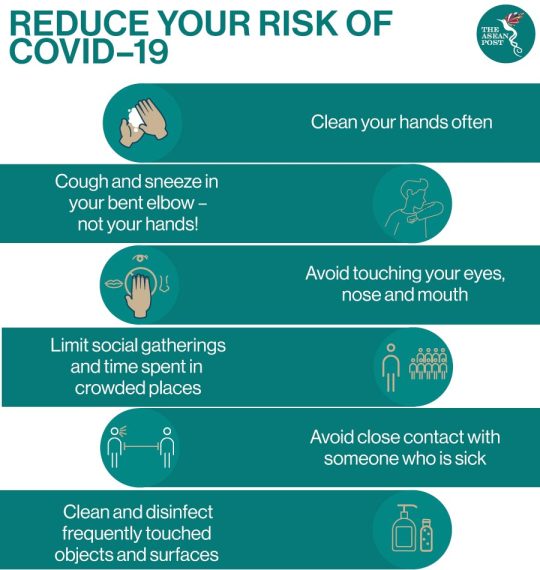
Furthermore, the outbreak has made everyone more concerned about health and hygiene. Wear a mask while going out, avoid crowds, social distancing, use public chopsticks and spoons, wash your hands often when returning home, and pay attention to disinfection…These initially stringent epidemic prevention and control measures are gradually becoming the conscious behaviour and everyday routines of an increasing number of individuals.
What are the downsides?

People utilise social media and other digital channels to stay informed and connected. However, the propagation of disinformation on social media and other digital platforms is seen as a public health danger on par with the virus itself. Inaccurate information has harmed the worldwide response to the epidemic, weakening public trust and hurting attempts to halt its spread.
Gloomy statements regarding COVID-19 and its accompanying mortality are common in social media newsfeeds, heightening the risk of mental illness. It is normal for people to turn to social media during stressful times. Users, for example, might briefly escape from bad feelings when using platforms such as Facebook, and any good elements linked with social media use are related with addictive behaviours.
Is social media useful in spreading information on Covid-19 in Malaysia
From my own experience, I think it is useful. During the pandemic, I frequently checked Facebook for the daily number of confirmed cases, vaccinations and covid information. I rarely encounter fake news since I always seek reliable data from official websites or authorised media. All I heard were traditional cures passed down from my parents, uncles, and aunts. There is one in particular that I find obscene. To avoid covid, cut the garlic and marinate it in vinegar, then take a deep breath. People also claim that vitamin and mineral supplements will treat COVID-19, which I don't believe can cure, although I did take a lot of vitamins during that time since I believe vitamins may encourage excellent nutritional status.
Fact: Vitamin and mineral supplements cannot cure COVID-19
Micronutrients such as vitamin D and C and zinc are essential to the good functioning of the immune system and play a key role in promoting health and good nutrition. At present, there is no guidance on the use of micronutrient supplements to treat COVID-19.
WHO is coordinating efforts to develop and evaluate COVID-19 treatment drugs.
Fact: 5G mobile network will not spread COVID-19
Viruses cannot be transmitted through radio/mobile networks. COVID-19 is spreading in many countries that do not yet have 5G mobile networks.
Infected people spread COVID-19 through respiratory droplets splashed while coughing, sneezing or talking. People may also be infected after touching their eyes, mouths or nose after touching the surface of contaminated objects.
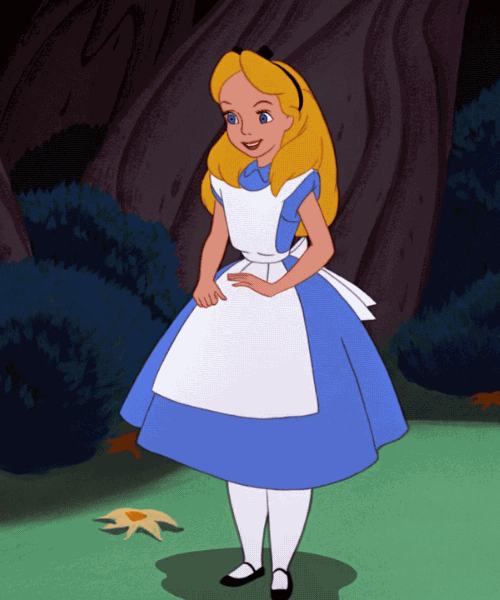
References:
Williams, N 2022, What Role has Social Media Played in COVID-19?, News-Medical, viewed on 12 November 2022,
2 notes
·
View notes
Text
Week 5: What is Digital Citizenship?
Hashtag Publics, Political Engagement and Activism
In Week 5 in our MDA 20009 Digital Communities journey, we have explored the intricate concepts of digital citizenship and hashtag activism. Join me as we unravel the nuances that define these contemporary phenomena and their profound impact on our societal fabric.
At the core of our discussion lies the notion of digital citizenship, a concept intricately linked to traditional ideas of civic responsibility and participation. Just as being a citizen of a nation entails certain rights and duties, digital citizenship empowers individuals to engage responsibly in online communities, fostering positive interactions and contributing to the collective well-being. Whether it's creating digital content, participating in online discourse, or navigating digital platforms, the essence of digital citizenship encompasses a spectrum of values, skills, and attitudes crucial for active engagement in the digital age.
However, the landscape of digital citizenship is not devoid of complexities. It encompasses diverse perspectives, ranging from ensuring online safety and education to navigating the intricacies defined by platforms and algorithms. The multifaceted nature of digital citizenship underscores its pivotal role in shaping our online experiences and interactions.
Platform studies offer invaluable insights into the evolving dynamics of digital platforms and their impact on societal structures. Through platformization, social media corporations transform into influential actors, shaping discourse and facilitating connectivity on a global scale. The emergence of hashtag publics further amplifies this phenomenon, serving as linguistic markers that galvanize communities, facilitate connectivity, and channel activism around shared themes and events. From #MeToo to #BlackLivesMatter, hashtag activism has become a potent force for social change, mobilizing digital citizens and amplifying voices on pressing issues.
In the realm of political engagement, social media platforms emerge as powerful catalysts, reshaping traditional modes of participation and advocacy. Whether it's sharing petitions, contacting public officials, or forwarding political news, digital citizens leverage social media to amplify their voices and mobilize collective action. The 2016 US election serves as a poignant example, showcasing the transformative potential of social media in shaping political discourse and voter engagement.
As we navigate the complexities of digital citizenship and hashtag activism, let us embrace our roles as responsible digital citizens, committed to fostering positive interactions, amplifying marginalized voices, and driving meaningful change in our digital communities and beyond.
Until next time, let us continue to navigate the digital landscape with curiosity, empathy, and a commitment to building inclusive and empowered communities.
0 notes
Text
Platformization: the platforming of connectivity and diversity
Digital activists face a multitude of obstacles that cut across both technological and sociological domains, greatly affecting their capacity to function efficiently in the digital sphere. Regarding technology, digital activists face content filtering and restriction that limits the information that is essential for advocacy and organization (Barlow, 1996). Cyberattacks and hacking are an ever-present threat that might jeopardize activists' data and communication links, undermining their work (Denning, 2001). Furthermore, activists are intimidated by the threat of increased government monitoring, which encourages self-censorship and has a deterrent effect on online activity.

Digital activists confront additional problems due to societal issues. Online freedom of expression, assembly, and organization is restricted by legal and regulatory hurdles that take the form of restrictive frameworks (MacKinnon, 2012). The potential risks and implications connected with digital activism are further compounded by the social stigma aimed towards them, especially in authoritarian countries where dissent is severely condemned. Furthermore, a major barrier that disproportionately affects underprivileged populations and prevents them from fully participating in digital activism initiatives is restricted access to resources, such as internet connectivity, devices, and technical abilities (Warschauer, 2004).
The efficacy of digital activism is further undermined by the effects of digital divisions, monitoring, and online censorship. Censorship techniques limit the free flow of ideas, making it more difficult for online activists to voice dissident viewpoints or promote social change (Morozov, 2011). The variety of voices and ideas in digital settings may be compromised by self-censorship brought on by the fear of censorship. The confidentiality of sensitive information is put at risk by the compromised security of activists' communications, directly endangering both their safety and the effectiveness of their activities (Ronson, 2015). Digital gaps are further exacerbated by differences in internet access and technology resources, which prevent some groups from engaging in digital activism and exacerbate social injustices (DiMaggio & Hargittai, 2001).

References:
1.Barlow, J. P. 1996, A Declaration of the Independence of Cyberspace, Electronic Frontier Foundation.
2.Denning, D. E. 2001, 'Reflections on cybersecurity', Computers & Security, vol. 20, no. 8, pp. 664-675.
3.DiMaggio, P. & Hargittai, E. 2001, 'From the ‘digital divide’to ‘digital inequality’: Studying Internet use as penetration increases', Princeton University Center for Arts and Cultural Policy Studies.
4.MacKinnon, R. 2012, Consent of the networked: The worldwide struggle for Internet freedom, Basic Books.
5.Morozov, E. 2011, The Net Delusion: The Dark Side of Internet Freedom, PublicAffairs.
6.Ronson, J. 2015, So You've Been Publicly Shamed, Riverhead Books.
7.Warschauer, M. 2004, Technology and social inclusion: Rethinking the digital divide, MIT Press.
0 notes
Text
Week 9: Gaming Communities, Social Gaming & Live Streaming :)
The gaming community has grown exponentially over the last few years. As highlighted in the reading “The Melbourne indie game scenes: value regimes in localized game development” there is “an overproduction of videogame making activity insofar as the number of people able and eager to create videogames has outgrown what the local industry is able to commodify and instead manifests as informal networks and communities of practice: shared spaces, friend groups, meet ups, parties, resource sharing, and game jams” (Keogh, 2021, p.212). Gaming is one of the largest forms of contemporary entertainment.
Furthermore, social gaming and live streaming have also emerged from the gaming world. Social gaming is often played amongst friends, but it may also be played with strangers online. It allows for users to not only connect and play with their friends but also with other gamers from across the world. Social gaming can lead to new friendships forming with a common interest of videogames.
Additionally, many gamers now livestream when they are playing videogames on platforms such as Twitch with a live audience that can interact with them through the chat feature. This allows other gamers the opportunity to watch their favorite gamers play a game in a live setting. However, Twitch has also evolved as a platform, as stated in the reading “Broadcasting ourselves”. Taylor explains that Twitch: “began as a platform to support digital gaming [but] has quickly expanded to accommodate people who want to produce a range of creative content for others. […] Across the platform, participants are creating new entertainment products that mix together gameplay, humor, commentary, and real-time interaction with fans and audiences” (Taylor, 2018, p.9).
I am not particularly interested in gaming as I am not a gamer; however, I follow a social media creator, Jc Caylen who has started to use Twitch for other content as well. He does gaming live streams but he also does live streams for entertainment purposes such as answering questions sent in by fans or doing a fun activity with his friends who are also social media influencers infiltrating the twitch live stream world. They are known as the camboys.
References
Keogh, B 2021, 'The Melbourne indie game scenes: value regimes in localized game development' (Chapter 13), Download 'The Melbourne indie game scenes: value regimes in localized game development' (Chapter 13),in P Ruffino (ed), Independent Videogames: Cultures, Networks, Techniques and Politics, Routledge, pp.209-222.
Taylor, TL 2018, ‘Broadcasting ourselves’ (chapter 1), in Watch Me Play: Twitch and the Rise of Game Live Streaming, Princeton University Press, pp.1-23.


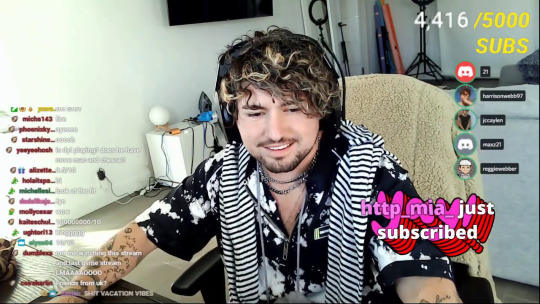
a
0 notes
Text
Week 6 Slow Fashion Movement
Of course we often hear the word fast fashion and slow fashion movement, fast fashion itself emphasizes more on fast production, use only a few times, low prices, and very high clothing turnover. Slow fashion, on the other hand, emphasizes quality, longevity, responsible production, and environmentally friendly consumption. The idea of slow fashion centers on sustainability in the fashion and design industry that uses high quality, small production, local products, and fair labor practices according to (Pookulangara, Shephard 2013, p. 201). With fast fashion being a problem, the slow fashion movement was created.

This slow fashion movement emphasizes and encourages people to buy fewer clothes with high quality and last long.
Instead of buying a lot of clothes that are cheap, not of good quality and can only be used once. According to (Chi, Gerard, Yu & Wang 2021, p. 102) The goal of slow fashion is not to "not buy", but rather to "reduce the speed and amount of consumption" and choose high-quality goods that are sustainably made and intended to last. On the other hand, according to (Domingos, Teixeira Vale & Faria 2022, p. 11) Slow Fashion products are considered to have superior quality by its customers, which encourages people to buy them, feel good about buying them, and invest in more durable goods. Not only that, but this movement is also very influential in encouraging the use of recycled resources or organic materials and reducing fashion waste and pollution during production.

The movement also covers issues related to labor rights and fair trade, with the slow fashion movement hoping that businesses are able to ensure that the people responsible for creating clothes are treated ethically and paid their fair share.
Overall, the slow fashion movement emphasises quality, sustainability, and social responsibility to encourage a more deliberate and mindful approach to fashion consumption in society.
Reference :
Chi, T, Gerard, J, Yu, Y & Wang, Y 2021, "A study of U.S. consumers" intention to purchase slow fashion apparel: understanding the key determinants’, International journal of fashion design, technology and education, vol. 14, no. 1, Taylor & Francis, Abingdon, pp. 101–112.
Domingos, M, Vale, VT & Faria, S 2022, "Slow Fashion Consumer Behavior: A Literature Review", Sustainability (Basel, Switzerland), vol. 14, no. 5, MDPI AG, Basel, pp. 2860.
Pookulangara, S & Shephard, A 2013, "Slow fashion movement: Understanding consumer perceptions—An exploratory study", Journal of retailing and consumer services, vol. 20, no. 2, Elsevier Ltd, pp. 200–206.
0 notes
Text
Week 5 Digital Citizenship
This week discusses the concept of digital citizenship which can be referred to as the responsible usage of technology via various platforms. It addresses the understanding of being respectful toward others within the online space. To be a good digital citizen, you must utilise your technology in a positive way that will encourage and communicate with society whilst keeping a respectful manner online. The reading highlights the importance of teaching digital citizenship using an inclusive lens which considers the different social identities like race and gender. The reading argues at the concept that digital citizenship education should be empowering and offer a platform that allows users to explore issues around margilised groups and develop a sense of critical thinking. As technology is becoming a tool that it utilised by most in their everyday lives, “digital citizenship education is essential to a healthy democracy,” (Choi & Cristol, 2021). They suggest that digital citizenship can be a successful tool for change and promoting social equality. Digital citizenship has the power to enact movements and drive change which is why it’s coming into the spotlight as modern technology is becoming increasing popular. The emergence of digital personas has “transformed the way social movements operate” by providing opportunity for “collective action,” (EAVI 2023). An example of successful digital citizenship in play would be the 2017 #MeToo movement which saw the use of a hashtag on social media which quickly spread around the world as people shared their stories of sexual harassment. Through digital channels like Twitter, Facebook and Instagram, survivors were able to connect with one another, sharing experiences and driving change. The women victims that participated in this campaign were “given a voice” to share their experiences via an online space that then grew to a “much wider audience” through the representation making it to “traditional media,” Suoranta J, Vaden T 2020). Digital citizenship is altering the way people act online however the effects can be both positive like the #MeToo movement and negative through online harassment which is why the importance of teaching correct citizenship online is a growing necessity.
Choi, M & Cristol, D 2021, Digital citizenship with intersectionality lens: Towards participatory democracy driven digital citizenship education, Theory Into Practice, 60(4)
Suoranta, J & Vadén, T 2010, Digitalism and the future of education. Policy Futures in Education, 8(1), 21-34.
EAVI (n.d.), Digital Citizenship and Social Movements: Patterns and Responsibilities, EAVI, viewed 24th March 2023, < https://eavi.eu/digital-citizenship-and-social-movements-patterns-and-responsibilities/ >
0 notes
Text
The Gaming Evolution
The increased rise in gaming in the form of playing competitively and for social reasons has allowed players from all across the world to come together digitally and connect in a diverse and most welcoming space. Gaming initially began with games like Pacman and Pinball played in local arcades or pubs, this was considered a socially acceptable way for adults to play games where the only intent was to beat the highest score. Whereas today, video and social games today aren't quite as simple, they have a range of objectives such as missions and levels. Games have also become very social with multiplayer functions and the ability to connect with friends and family through social media. Some commonly played games are Candy Crush, 8 Ball Pool and Trivia Crack.

A common misconception is that gaming is an individual and isolated activity, that is stereotypically only performed by those who are labelled as nerdy, geeky and hide in a dark room by themselves. In reality, games require community participation, support and also competitiveness, that is what makes them exciting. Gaming demands active participation as, without this, there is no one to compete against or share your victories with. The way we play and consume games has expanded, these days we can play and watch on mobile phones, gaming PC, consoles and desktop computers. Another way that players and viewers can connect is through the increased use of game live streaming, the ability to "[Broadcast] their gaming to the many people watching them" (Taylor 2018, p.10) and make participants feel, although they are participating and having an impact on how the game plays out. These live streams can be viewed and uploaded to many platforms like Twitch, YouTube and Hitbox.

Gamers now can connect and bond over their common love and competitiveness for all kinds of gaming. The digital platforms have created a very established digital sphere that encourages and allows for equal participation. Gaming is inclusive of every religion, gender, skin colour and financial status, making it a safe space for the user's to do what they enjoy.
References
Taylor, TL 2018, ‘Broadcasting ourselves’ (chapter 1), in Watch Me Play: Twitch and the Rise of Game Live Streaming, Princeton University Press, pp.1-23
Aleena Chia, Brendan Keogh, Dale Leorke, and Benjamin Nicoll (2020). "Platformisation in game development", Internet Policy Review 9 (4). DOI: 10.14763/2020.4.1515.
0 notes
Text
WEEK 10: Gaming Communities, Social Gaming and Live Streaming
Online gaming and gaming communities are pretty widespread across most online spaces and they can be considered to be their own public sphere. However, these public spheres can be quite male-dominated which has led to the culture of gaming becoming extremely masculine and often guarded, with only people who fit the gamer stereotype being welcomed and accepted into the community. So how do these communities come about and continue to interact with each other? Well, one of the most common ways which have gained popularity over the last few years is game streaming platforms, for example, YouTube gaming, Microsoft mixer, Facebook gaming, or one of the more popular sites Twitch. Live streaming video games on these platforms is an activity where people broadcast themselves playing games, e-sports, and other game-related content to a live audience online. The streams are often live, however, not always and they can go for any given time length with some streams lasting up to 24 hours. Streaming sites can create online communities of thousands of views and with the live chats directed to the streamer, it is easy for a fan to feel as if they are connecting and creating a relationship with the person on the screen. “Some of these broadcasts have small audiences of friends and family who watch, and others draw thousands or even millions over the course of a weekend event.” (Taylor TL 2018, P.9) Of course, using the chat to interact with fans can create para-social relationships with very uneven power dynamics which can be dangerous in online communities. A Para-social relationship can be described as when an individual develops a one-sided relationship with someone who is presenting to a mass audience, which can be very common in digital communities and fan groups. Live streaming can be extremely personal, so much so that people can send money to the person they are watching in the chat in the form of gifts, in return for a shout-out or mention. This simply re-enforces the idea of para-social relationships and uneven power dynamics between a streamer and their fans.
0 notes
Text
Week 10 - Online gaming and streaming
Just as social media has gained more traction over recent years, so has online gaming and live streaming, especially during the pandemic of covid-19, where more and more people turned to online gaming while they were stuck at home as a form of entertainment and interaction with friends.
Due to this, live streaming has increased in popularity, and the gaming communities have been able to profit both socially and monetarily off of their video game 'fun' by encouraging and gaining followers to watch their gaming (Wohn and Freeman 2020).
The following and traction that these streamers possess have pushed streamers into the micro-celebrity category and, in some cases, led to becoming a higher-ranked celebrity in the gaming world. Such as twitch's #1 streamer Ninja Blevins, who gained a big enough following after broadcasting his fortnight games and has over 18.2 million followers (Social Blade 2022). As individuals get more and more successful, companies tend to reach out for advertisements and endorsements, enabling the monetary value of their profession to increase and, in some cases allowing the streamers to stream full-time (Reddit 2014).
Although playing a video game, streamers connect with their watchers through their interactions in the game through their personalities. This plays a role in the connection to their subscribers as it changes the experience to be more than just watching the streamer play their game but talk to them and create banter making the whole broadcast more entertaining (Taylor 2018, p. 6).
The technological advances in the 21st century have enabled video games' continuous production and evolution. This has contributed to considerable advances in online gaming as it allows for interaction and friendships to be formed across the world. As technology continues to develop into faster and better quality games, the increase in popularity in online gaming and the streaming and broadcasting platform that relies on it (Cabeza-Ramírez et al., 2022).
References
Cabeza-Ramírez, LJ, Sánchez-Cañizares, SM, Fuentes-García, FJ & Santos-Roldán, LM 2022, ‘Exploring the connection between playing video games and watching video game streaming: Relationships with potential problematic uses’, Computers in Human Behavior, vol. 128, p. 107130.
Reddit 2014, r/Twitch - Companies That Sponsor Streamers That Send You Gifts?, Reddit, viewed 19 May 2022 .Social Blade 2022, Top 100 Twitch users sorted by Followers - Socialblade Twitch Stats | Twitch Statistics, socialblade.com.
Taylor, TL 2018, ‘Broadcasting ourselves’ (chapter 1), in Watch Me Play: Twitch and the Rise of Game Live Streaming, Princeton University Press, pp.1-23
Wohn, D. Y. and Freeman, G. (2020) ‘Live Streaming, Playing, and Money Spending Behaviors in eSports’, Games and Culture, 15(1), pp. 73–88. doi: 10.1177/1555412019859184.
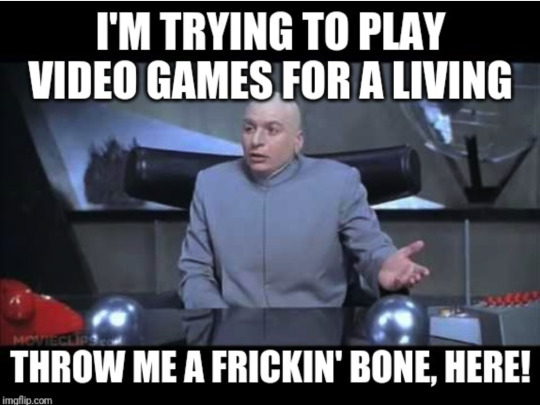
0 notes
Text
Week 10 - Gaming communities
From the early days of arcades to YouTube gaming videos, to now the platform of twitch, gaming communities stretch far and wide and have proven their own versatility over the past few years
As I was unable to attend class this week, I am going to quickly summarise my own experience in online gaming communities. Growing up I was never as much of a gamer as my sister was, who played dozens of games and still does to this day, she watches live streams via twitch, attends conventions and I’ve been subject to buying her games and parts of consoles for her birthdays for the past 5 years that I’ve been working. However, something notable is that she never streamed or used live chat, which largely comes down to the pure sexism that tends to relish in gaming communities.
In this week's lecture, Taylor Hardwick discusses the definition of games, which is relatively broad. When thinking about games it can be everything from board games that you would play with your family, to the sports we watch and the digital games we play. The lecture also touched on topics including the history of digital games, arcade games, and gaming culture, where the typical gamer is White or East Asian, middle class and male, thus leading to a more masculine culture. We finished on the final point that video games are inherently social.
In this week's reading, the discussion is mainly based on the evolution of gaming communities, where we now see once private gaming experiences, becoming not only a stream of income but “we are seeing the rise of a new form of networked broadcasting — one tied up with aspirations to transform otherwise-private play into public entertainment.” (Taylor and Princeton University Press, 2018). The use of twitch is evolving every day and thus has had a major impact on gaming communities and their evolvement into the entertainment industry.
Taylor, T.L. and Princeton University Press (2018). Watch me play: Twitch and the rise of game live streaming. Princeton; Oxford: Princeton University Press, [] © By Princeton University Press.
0 notes
Text
Blogging in the era of TikTok and Instagram ///!!
In today's digital environment, it is important to consider if blogging is still relevant in the era of TikToks and Instagram. We may take into account a number of factors, such as communities, socialisation, digital data, and organisations, to investigate this subject.
Communities:
Blogging: Historically, specialised groups and subject matter experts have used blogging as a platform. Bloggers frequently provide material that appeals to specialised interests and subject matter. These groups of people may be incredibly helpful and engaging.
TikTok and Instagram: These two platforms also contain communities, although their behaviours are usually rather different. Platforms for sharing short movies and images build communities around popular culture trends, influencers, and aesthetic ideas. Instead of extended conversations, engagement frequently consists of likes, comments, and shares.
Socialisation:
Blogging: Blogging enables in-depth topic investigation and fosters deliberative dialogue through comments. It encourages long-form material that encourages in-depth discussion and analysis.
TikTok and Instagram are two sites that emphasise rapid and attractive content more than others. Through likes, emoticons, and brief remarks, they promote social interaction. The exchanges are frequently more informal and centred on visuals.
Digital Data:
Blogging: A considerable volume of text is produced by blogs. This information may be used for SEO (Search Engine Optimisation), making it an important source of organic traffic over the long run. Bloggers may get in-depth information about user behaviour and content performance from analytics tools.
TikTok and Instagram are two social media sites that produce a lot of graphic and video content. Although they provide analytics tools, the data may be more difficult to understand and the content's shelf life is frequently shorter owing to the frequent revisions.
Organisations:
Blogging: For content marketing, thought leadership, and SEO, many organisations continue to see value in blogging. A technique to build authority and offer in-depth information is through blogs.
Organisations frequently utilise TikTok and Instagram for visual marketing, influencer collaborations, and brand recognition. Short-form material might be useful for swiftly reaching larger audiences.
In conclusion, the objectives and tastes of content producers and users will determine if blogging is still relevant in the TikTok and Instagram era.

#blogging#social media#MDA2009#Dr_Bertha_Supremacy#blogger#instagram#tiktok#spotify#soundcloud#media#ronaldo#taylor swift#quora#socialmedia
7 notes
·
View notes
Text
Week 3 of mda2009: How tumblr acts as a digital community
According to Bruns and Highfield (2016), p. 98, a "digital community," also known as a "micro-public," is a little kind of hub that may "co-exist, [is] intersecting and overlapping in multiple forms across diverse media platforms." Smaller communities exist on various social media platforms where users can participate and interact with others by using the internet as a forum for conversation.
One social networking site that serves as a virtual community is Tumblr. When the company was founded in 2007, David Karp sought to provide a "free" platform for people to blog, allowing them to post anything they wanted or enjoyed. At the time, blogging had evolved into a form of "editorial material" (Karp, 2011). For Karp, Tumblr is a means to differentiate from other social media platforms, like Facebook or Twitter at the time, in that there was less creative control over how a person could arrange or style their profile. This allowed people to creatively express themselves because they could design their blog in their own unique way and essentially post about what they wanted. This illustrates how Tumblr functions as a community for people to truly express themselves but can also do so anonymously, something that many other social media platforms do not permit. Keller (2019, p. 7) writes that "Tumblr could be understood as a platform that prioritises aesthetics, amplified through its allowance of user-customised short form blogs."
The 2010s saw the realization that Tumblr was a site where users could "revel in anonymity." and speak without fear about anything they desired (Reeve, 2016). becoming a place where people, mostly teenagers, went to find solace and to openly express emotions that they would not otherwise be able to on other social media sites. Users could also "reblog" content they found entertaining, allowing them to create a very personal profile that accurately reflected who they were. For LGBT+ adolescents in particular, this was crucial since, according to McKracken (2017), the platform's anonymity allowed users to feel comfortable being themselves and interacting with like-minded others. This had a beneficial effect on LGBT+ adolescents since it allowed them to learn more about themselves or others and gave them a sense of support from the online community.
References
Keller, J 2019, ‘“Oh, She’s a Tumblr Feminist”: Exploring the Platform Vernacular of Girls’ Social Media Feminisms, Social Media + Society, vol. 5. no. 3, p.7
McCracken, A, Cho, A, Stein, L & Neill Hoch, I 2020, a Tumblr Book: Platforms and Cultures, University of Michigan Press
Schonfeld, E 2011, (Founder Stories) Why David Karp Started Tumblr: Blogs Don’t Work For Most People. https://techcrunch.com/2011/02/21/founder-stories-why-david-karp-started-tumblr-blogs-dont-work-for-most-people/>
0 notes
Text
Week 3: Tumblr case study
On this week we have been told to revise the term "Public Sphere" and social media. The public sphere is a space where individuals from private spheres converge as a collective public entity with the aim of employing rationality to advance critical understanding, thereby instigating political transformations. The public sphere necessitates unrestricted availability of information, equitable and safeguarded engagement, and the avoidance of institutional influence, notably concerning economic matters. In addition, the social media consists of micro - publics and digital communities such as Facebook groups or social media comments. In conclusion, in order for a community to be considered a public sphere, it has to contain these following criteria:
Unrestricted access to information for all individuals and equitable involvement.
A setting devoid of institutional sway, coercion, or monitoring. Individuals should feel secure to contribute politically, economically, or socially.
Hindrances to participation in the digital community could stem from social media literacy, certain groups being marginalized due to economic status or racial factors, surveillance potentially limiting individuals' comfort in contributing, and algorithms potentially distorting or prejudicing the content individuals are exposed to.
Also, a closer look at Tumblr unveils its role as a case study in public sphere engagement. Despite its tumultuous history, Tumblr stands as a testament to the power of micro-publics, fostering communities that intersect and coalesce across diverse media platforms. Finally, Let's not overlook Tumblr's unique platform vernacular, characterized by its embrace of aesthetics and user-customized short-form blogs. Through interviews and insights, we uncover how teenage girls leverage Tumblr as a conduit for feminist critique and activism, showcasing their strategic prowess and discerning engagement with social media. #MDA20009 #Week3
1 note
·
View note
Text
The Future of the Internet: Decentralized Networks and Crowdsourced Content
#MDA2009 #Week8

Introduction
As we navigate the digital landscape of the 21st century, the internet is undergoing a transformation. Decentralized networks are gaining traction, promising to reshape the way we access and share information. In this blog post, we'll explore the potential of decentralized networks and their role in emphasizing crowdsourced content and information, ultimately asking the question: Will decentralized networks become a bigger, more mainstream part of the internet?

Understanding Decentralized Networks
A Paradigm Shift
Before we delve into the future, it's important to understand what decentralized networks are and why they matter. These networks operate in stark contrast to the centralized model adopted by internet giants like Facebook and Google. In decentralized networks, control, and data management are distributed across a multitude of nodes, each acting as a mini-server contributing to the network's functionality (Alshaar 2023).

The Promise of Decentralization
Redefining Internet Principles
Decentralized networks offer a world of promises, including:
User Empowerment:
A fundamental shift of power back into the hands of users. With decentralized networks, individuals have more control over their data and digital identity.
2. Resilience:
These networks are inherently resilient to censorship and technical failures, thanks to their lack of a single point of control.
3. Enhanced Security:
Enhanced security through cryptographic protocols and peer-to-peer communication.
(Dick-Sagoe 2019)

Blockchain's Role in Decentralized Networks
The Foundation of Trust
Blockchain technology plays a pivotal role in many decentralized networks. It provides transparency and trust in transactions and data. Platforms like Ethereum and Polka dot are redefining the way information and content are exchanged, promising a more secure and transparent internet (Sarmah 2018).

Crowdsourced Content: The Heart of Decentralization
Community-Driven Information
Central to the concept of decentralized networks is the idea of crowdsourced content. Here's how it works:
1. Content Creation:
Users actively contribute by creating content in various forms, such as articles, videos, or applications.
2. Validation:
Instead of relying on centralized authorities, content is validated and curated by the community itself, ensuring a more democratic process.
3. Rewards:
Rewards*: Contributors are often rewarded with cryptocurrencies or tokens for their contributions, creating an incentive for quality content.
(Wazny 2017)

Challenges of Crowdsourcing
Ensuring Quality and Reliability
While crowdsourced content has immense potential, it also poses some challenges:
Quality Control:
Maintaining quality and accuracy can be a challenge when there is no centralized authority to fact-check information.
2. Misinformation:
The risk of spreading misinformation when there are no centralized gatekeepers to verify content.
3. Incentives:
Designing effective incentive mechanisms to encourage quality contributions and prevent spam.
(Bhatti, Gao & Chen 2020)
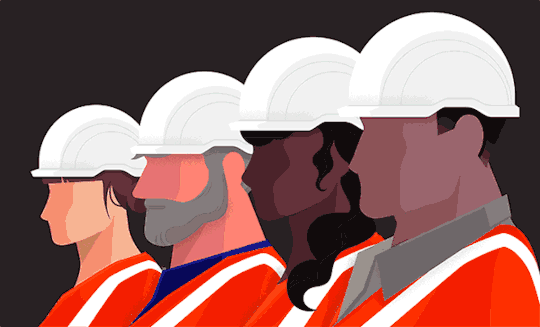
The Road Ahead: Mainstream Adoption
Can Decentralized Networks Go Mainstream?
The million-dollar question is whether decentralized networks will become a mainstream part of the internet. Several factors play into this:
User Adoption:
The more users embrace decentralized platforms, the closer they come to mainstream recognition.
2. Regulatory Challenges:
Government regulations and policies will play a significant role in shaping the future of decentralized networks.
3. Integration with Existing Services:
The ease with which decentralized networks integrate with the services we already use is crucial for their adoption.
(Kremenova & Gajdos 2019)

Conclusion
Shaping the Internet of Tomorrow
The rise of decentralized networks has the potential to redefine the very fabric of the internet. Emphasizing crowdsourced content and information, these networks may lead us towards a more democratic and user-centric digital environment. Yet, challenges remain, and the future of decentralized networks is uncertain. The journey towards decentralization may be slow and filled with hurdles, but it is a path worth exploring.
As users, we have the power to influence this transformation by embracing the principles of decentralization, supporting projects that align with these values, and actively participating in the creation of a more open and equitable internet.

List of References
Alshaar, AM 2023, 'Exploring the digital landscape: Opportunities, challenges, and strategies in digital entrepreneurship', International Journal of Entrepreneurship, vol. 27, no. 4, viewed 31 October 2023, <https://www.researchgate.net/publication/371540338_Exploring_the_Digital_Landscape_Opportunities_Challenges_and_Strategies_in_Digital_Entrepreneurship>.
Bhatti, SS, Gao, X & Chen, G 2020, 'General framework, opportunities and challenges for crowdsourcing techniques: A comprehensive survey', Journal of Systems and Software, vol. 167, no. 1, viewed 31 October 2023, <https://www.sciencedirect.com/science/article/abs/pii/S0164121220300893>.
Dick-Sagoe, C 2019, 'Deactualization for improving the provision of public services in developing countries: A critical review', Cogent Economics & Finance, vol. 8, no. 1, viewed 31 October 2023, <https://www.tandfonline.com/doi/full/10.1080/23322039.2020.1804036>.
Kremenova, I & Gajdos, M 2019, 'Decentralized networks: The future internet', Mobile Networks and Application, 6 January, viewed 31 October 2023, <https://link.springer.com/article/10.1007/s11036-018-01211-5>.
Sarmah, SS 2018, 'Understanding blockchain technology', Computer Science and Engineering, vol. 8, no. 2, viewed 31 October 2023, <https://www.researchgate.net/publication/336130918_Understanding_Blockchain_Technology>.
Wazny, K 2017, '"Crowdsourcing" ten years in: A review', Journal for Global Health, vol. 7, no. 2, viewed 31 October 2023, <https://www.ncbi.nlm.nih.gov/pmc/articles/PMC5735781/>.
1 note
·
View note
Text
Week 8: Digital Citizenship and Software Literacy: Snapchat lenses
When Snapchat first introduced lenses, I remember that it felt as if they were fun and playful with many of them being animal themed. They were not to be taken too seriously as they were funny filters you could use to send to your friends. However, once you critically analyze what these filters are really doing to users faces it becomes quite problematic. For instance, it was noted that many filters would whitewash users faces and “people of colour find their complexions unnaturally and undesirably lightened by Snapchat’s filters” (Barker, 2020, p. 209). Many lenses “that apply makeup, rhinestones, and flower crowns – characteristics generally associated with performances of beauty and femininity” white-wash users faces (Barker, 2020, p. 214). Whitening skin for beautification purposes is extremely racist and encourages a western beauty standard that claims whiteness means beautiful.
For those of you who remember when Snapchat lenses were first introduced, one of the most popular filters was the cute puppy filter. This filter would add puppy ears, a puppy nose and if you moved a puppy tongue to your face. It had become extremely popular and widely used. Many of us must have used it sending snapchats to our friends without really noticing that “the puppy filter [...] smooths your skin, widens your eyes, and visibly thins your face” (Barker, 2020, p. 213). These small changes to your face may initially go unnoticed, but if you would compare an unfiltered selfie to one with the puppy filter you may notice your face has changed beyond just the puppy ears and nose. Snapchat filters encourage a stereotypical heteronormative beauty standard “By thinning out the face, slimming and shortening the nose, enlarging the eyes, plumping the lips and smoothing out the skin” (Barker, 2020, p. 209). These other changes are unnecessary for an animal filter.
Although these changes may be minor, they can create insecurities for users. These changes can cause users to feel insecure about their facial features and may cause them to want to surgically change their faces to match the filtered version of themselves. Filters can be described as a form of “digital plastic surgery” (Barker, 2020, p. 216). This digital plastic surgery has translated to real plastic surgery as “some users […] seek Snapchat-inspired plastic surgery in the real world”. (Barker, 2020, p. 216). This has also lead to what is called Snapchat dysmorphia which “is related to body dysmorphic disorder, an obsessive- compulsive fixation on perceived appearance defects” (Barker, 2020, p. 216).
In ““Digitised Dysmorphia” of the Female Body: The Re/Disfigurement of the Image” Coy-Dibley discusses how the pressure online users may feel to alter their image to portray a perfect image of themselves online reflects the issues within society. She says that “The popularity of apps aimed at perfecting the body, air- brushing and erasing the raw image in exchange for an increasingly narrow, standardising perception of female beauty that excludes, marginalizes or simply overlooks differences in race, able- bodiedness and even gender identities […] emphasizes how entrenched with homogenized, Westernized and unattainable beauty standards our image- saturated culture has become” (Coy-Dibley, 2016, p.9).
References
Barker, Jessica. (2020). 'Making-up on mobile: The pretty filters and ugly implications of Snapchat'. Download 'Making-up on mobile: The pretty filters and ugly implications of Snapchat'.Fashion, Style & Popular Culture. 7. 207-221. 10.1386/fspc_00015_1.
Coy-Dibley, I. (July, 2016). “Digitised Dysmorphia” of the Female Body: The Re/Disfigurement of the Image Download “Digitised Dysmorphia” of the Female Body: The Re/Disfigurement of the Image. Palgrave Communications. 2:16040 doi: 10.1057/palcomms.2016.40
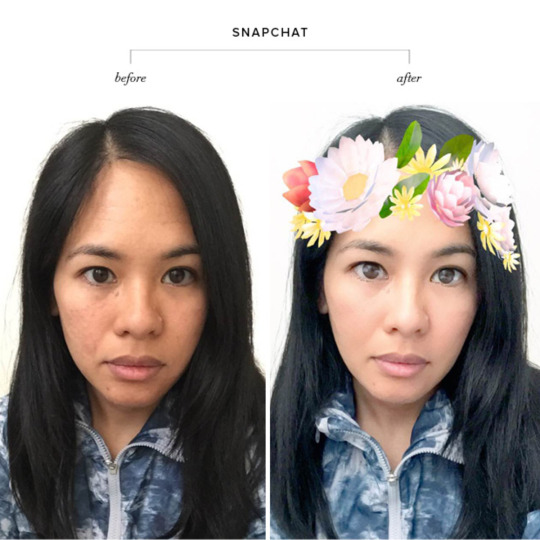
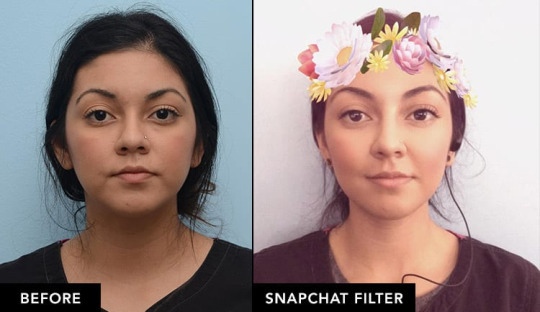
0 notes